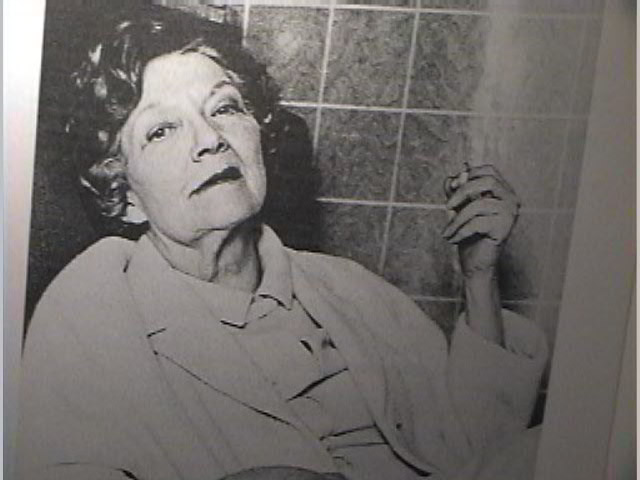Request FREE Travel Brochures

|
 |
Volume No. 1 Issue No. 23
 Dominica's Literary Hero
Dominica's Literary Hero
Jean Rhys is One of the Greatest authors of This Century

by: Thomson Fontaine

I have just completed reading-again, in one held breath (literally), the spellbinding novel, the Wide Sargaso Sea by Dominican novelist Jean Rhys. Written over the course of twenty-one years and published in 1966, it was immediately recognized as a central novel for those interested in colonialism, Caribbean culture, race and women's writing.
I first heard about Jean Rhys, without quite knowing it, many years ago while a student at the St. Mary's Academy. It was while browsing a book by Charles Dickens that made mention of Roseau, that one of my friends, on seeing my reaction, mentioned that there was a "Dominican lady" who had written a book that was very popular.
Since he did not know her name, or the title, I enquired of the kindly school librarian if she knew of some Dominican lady having written a book. She informed me that as far as she knew, no Dominican had ever written a novel, and even if someone had, it certainly was not in the library. And that was that.
Several years later, I came across the novel Good Morning, Midnight, Jean Rhys' tale of the lovely yet troubled Sasha Jensen and her travails in Paris, the city of both her happiest moments and her most desperate.
John Leonard of the New York Times described the novel as "astonishing and painful, claustrophobic, utterly convincing. It is the expression of a sensibility that seems in its turn to have informed the sensibilities of later writers".
I had inadvertently stumbled upon the "Dominican lady" and her extraordinary gift as one of the twentieth century's most brilliant, respected and read novelist.
Born in Roseau, Dominica in 1890 (at the modern day Venas Guest House), to Welsh father (Dr William Rees Williams) and Creole mother (granddaughter of a Scottish-born plantation owner and a West Indian, possibly Cuban, woman), she was named Ella Gwendolen Rees Williams. She was later to write under the name Jean Rhys.
The first seventeen years of her life was spent in the beautiful tropical paradise of Dominica, and would prove critical in helping prepare her to write the masterpiece that have become known the World over as the Wide Sargasso Sea.
In 1907 she left Dominica for England to attend Perse School for girls in Cambridge. Two years later, she enrolls in the Academy of Dramatic Art; stays two terms and is then withdrawn. She refuses to return to Dominica and instead joins a touring musical comedy company as a chorus girl. She was not to return to Dominica until 1936.
Rhys married Jean Lenglet, a Dutch journalist and poet in 1919. Between that year and her death in England in 1979, she would remarry twice, live in several European cities, and raise one daughter Maryvonne. One year before her death, she receives the Commander of the Order of the British Empire for her literary work.
Rhys first novel Quartet was published in 1924, followed by The Left Bank and Other Stories in 1927. Postures (published as Quartet in the United States) was published in Europe in 1928. In 1930, After Leaving Mr. Mackenzie was published, and four years later saw the publication of Voyage in the Dark, followed by Good Morning, Midnight in 1939.
Twenty- seven years later, in 1966, what is arguably one of the greatest literary pieces ever, The Wide Sargasso Sea was published. It immediately won the W.H Smith Award for Writers and the Heinemann Award of the Royal Society of Literature.
The later years of her life would be spent writing including Tigers are Better Looking and Sleep it Off Lady (collections of short stories), and My day, a collection of three autobiographical pieces published in Vogue. 1957 saw the BBC radio series of Good Morning, Midnight.
Several years after the publication of Wide Sargasso Sea, A. Alvarez declared in the New York Times Book Review that Jean Rhys was "the best living English Novelist". The novel set in Jamaica and Dominica (Massacre mostly), deals directly with colonialism, European dominance in the Caribbean, and the hypocrisies of English culture.
Wide Sargasso Sea rewrote the English classic, Charlotte Bronte's Jane Eyre, successfully shifting the focus from Jane to Bertha. It has served as a touchstone text for critics interested in modernism, feminism, and postcolonial theory.
The characters like Christophine, Godfrey, Mason and Cosway come alive in a way that is hauntingly reminiscent of our own childhoods and that of our forebears. In my mind Jean Rhys captures perfectly what made us as a people. Our struggles against the white planter class, religion, superstitions, relationships, ignorance, mistrust, and simplicity.
Listen to Christophine. "England" said Christophine, who was watching me. "You think there is such a place? How can you ask that? You know there is. "I never see the damn place, how I know?" "You do not believe that there is a country called England?". She blinked and answered quickly, "I don't say I don't believe, I say I don't know, I know what I see with my eyes and I never see it".
Quartet and Wide Sargasso Sea were both adapted to film in 1981 and 1993 respectively. The Jean Rhys Collection is held in the McFarlin Library at the University of Tulsa, USA.

|
|
 |
|






